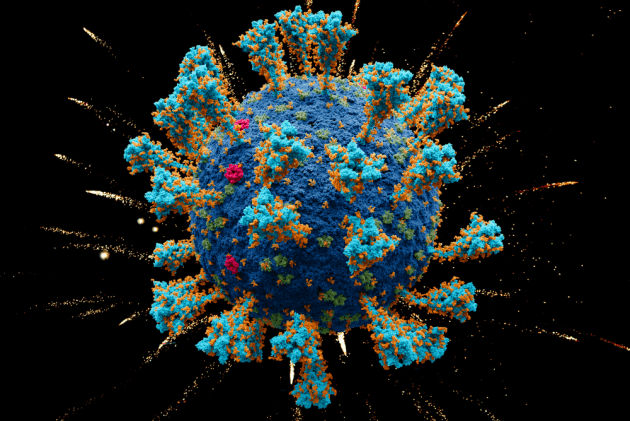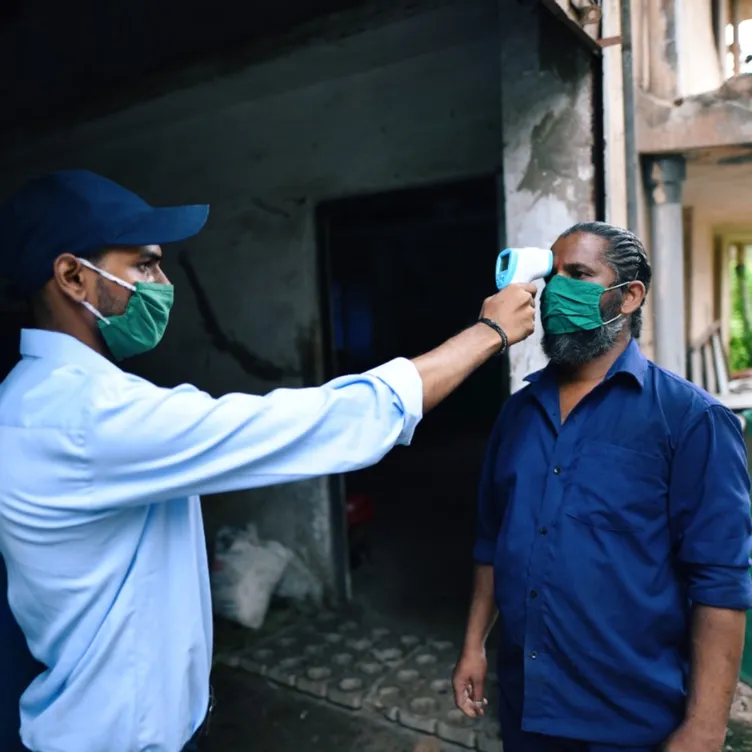What is the IHU variant?
A Covid variation has been identified that holds countless transformations inside its spike protein, some of which might assist the infection with sidestepping antibody prompted invulnerable security.
Albeit the full ramifications of the disclosure are as of now hazy, researchers have underscored the requirement for proceeded with observation, and focused on defensive measures, for example, social separating, cover wearing, and inoculation (where accessible) will assist with restricting its spread.
It has 46 mutations and 37 deletions, with 30 amino acid changes and 12 deletions as a consequence. The spike protein has 14 amino acid changes, including N501Y and E484K, and 9 deletions.
“This genotype design brought about the development of another Pangolin branch known as B.1.640.2, which is a phylogenetic sister gathering to the past B.1.640 genealogy, presently known as B.1.640.1. There are 25 nucleotide alterations and 33 deletions that separate the two lineages. Based on our earlier definition, the mutation set and phylogenetic location of the genomes acquired here imply a novel variation we designated “IHU.” “According to the team’s research study. The study has yet to be peer-evaluated.
Why is it named IHU?
The new variation has been named IHU regarding the foundation to which the analysts have a place.
Where was it first detected?
The variation, known as B.1.1.529, was discovered in Botswana on November 11, but more cases have subsequently been discovered in South Africa and in a patient who traveled to Hong Kong from South Africa. South Africa’s Institute for Communicable Diseases (NICD) announced in a statement on November 25 that 22 positive cases have been detected so far, with additional genome sequencing presently underway that might uncover more.
As per Prof Tulio de Oliveira, Director of the KwaZulu-Natal Research Innovation and Sequencing Platform at South Africa’s University of KwaZulu-Natal, early signs from demonstrative labs show that the new variation has quickly expanded in Gauteng territory, which incorporates the urban communities of Johannesburg and Pretoria, and might be available in different regions.
How many have been infected so far?
According to the researchers’ data, a total of 12 instances of IHU variant infection have come to light. “QPCR testing for variant-associated mutations revealed an uncommon combination in twelve SARS-CoV-positive patients residing in the same geographical region of southern France.” “The index patient returned after a trip to Cameroon,” according to the research report.
What is the transmission rate of the IHU variation and how aggressive is it?
The aggressiveness of this variation has yet to be determined by researchers. In terms of the virus’s transmission rate, the WHO has said that the IHU strain has not posed much danger since its discovery in November. It was identified about the same time as omicron, however, unlike the IHU form, the latter has spread internationally and is now a severe outbreak. The variation “has been on our radar,” according to Abdi Mahamud, a WHO incident manager on COVID.
As per the IHU specialists, it is too soon to guess the virological, epidemiological, or clinical parts of the IHU variety dependent on 12 cases. The study paper, which was uploaded on the medRxiv platform, has yet to be peer-reviewed.
Read| Omicron Variant Explained: Has India been hit by the third wave of Corona Virus?
WHICH MUTATIONS DOES IT CONTAIN?
B.1.1.529 is known to contain 32 changes in the quality for the Covid spike protein, contrasted with the first strain of SARS-CoV-2 previously distinguished in Wuhan, China. A considerable lot of these changes are additionally found in other VOCs, including the Delta variation, yet numerous others are not.
“Given the colossal number of changes it has gathered clearly in a singular burst, it likely progressed during a continuous sickness of an immunocompromised individual, possibly in an untreated HIV/AIDS patient,” said Prof Francois Balloux, Director of the University College London Genetics Institute, UK.
A portion of the changes found in other VOC incorporate an N501Y transformation, which further develops spike protein restricting to cell receptors, and a D614G change thought to improve viral replication – the two of which could make the infection more infectious. Others incorporate K417N and T478K changes, which might assist the infection with trying not to kill antibodies created through immunization or past contamination. It is hard to anticipate how contagious it could be at this stage.”
COVID-19 variant under watch by the World Health Organization (WHO)
The latest new COVID variation isn’t actually new, as indicated by authorities with the World Health Organization.
As of late, reports have surfaced of no less than twelve individuals contaminated with one more SARS-CoV-2 variation — B.1.640.2 — in Southern France, albeit the WHO says they’ve been noticing the B.1.640 variety (of which there are two subclasses, B.1.640.1 and B.1.640.2, as demonstrated by a WHO official) since November.
According to De Oliveira, the World Health Organization’s Technical Working Group will meet on Friday, November 26 to decide whether B.1.1.529 should be classified as a variation of interest (VOI) or a variant of concern (VOC), and so allocated a Greek letter.
VOIs include genetic markers that are projected to alter the transmission of a variation, the effectiveness of diagnostics, therapies, or immunizations, or appear to be responsible for an elevated number of instances. VOCs fit these requirements as well, but there is evidence of considerably enhanced transmissibility or disease susceptibility, as well as evidence that public health interventions, diagnostics, vaccinations, or therapies are likely to be less successful against it.
HOW CONCERNED SHOULD WE BE?
Although this cluster of mutations is certainly concerning, Balloux believes there is no cause to be alarmed until occurrences of the variation significantly increase in the near future. New varieties emerge all the time, and improved surveillance systems will certainly detect more of them. Many of these novel varieties, including those that were previously termed VOIs, fade away. Unless and until B.1.1.529 is transmissible enough to outcompete the Delta form, it may also vanish.
According to De Oliveira, while certain predictions regarding the impact of mutations in this variety may be made, the whole relevance is unknown, and vaccines remain the most important method for protecting against severe illness.
The good news is that utilizing a certain sort of PCR test, diagnostic and disease surveillance laboratories should be able to discover this variation prior to whole-genome sequencing, making it easier to track and understand its spread. It should also mean that we will have a better notion of how serious of a threat it is sooner, allowing governments to boost up containment efforts if necessary.
For the latest tech news & blogging Tutorials, follow TECH FOR U on Twitter, Facebook, and subscribe to our YouTube channel.


